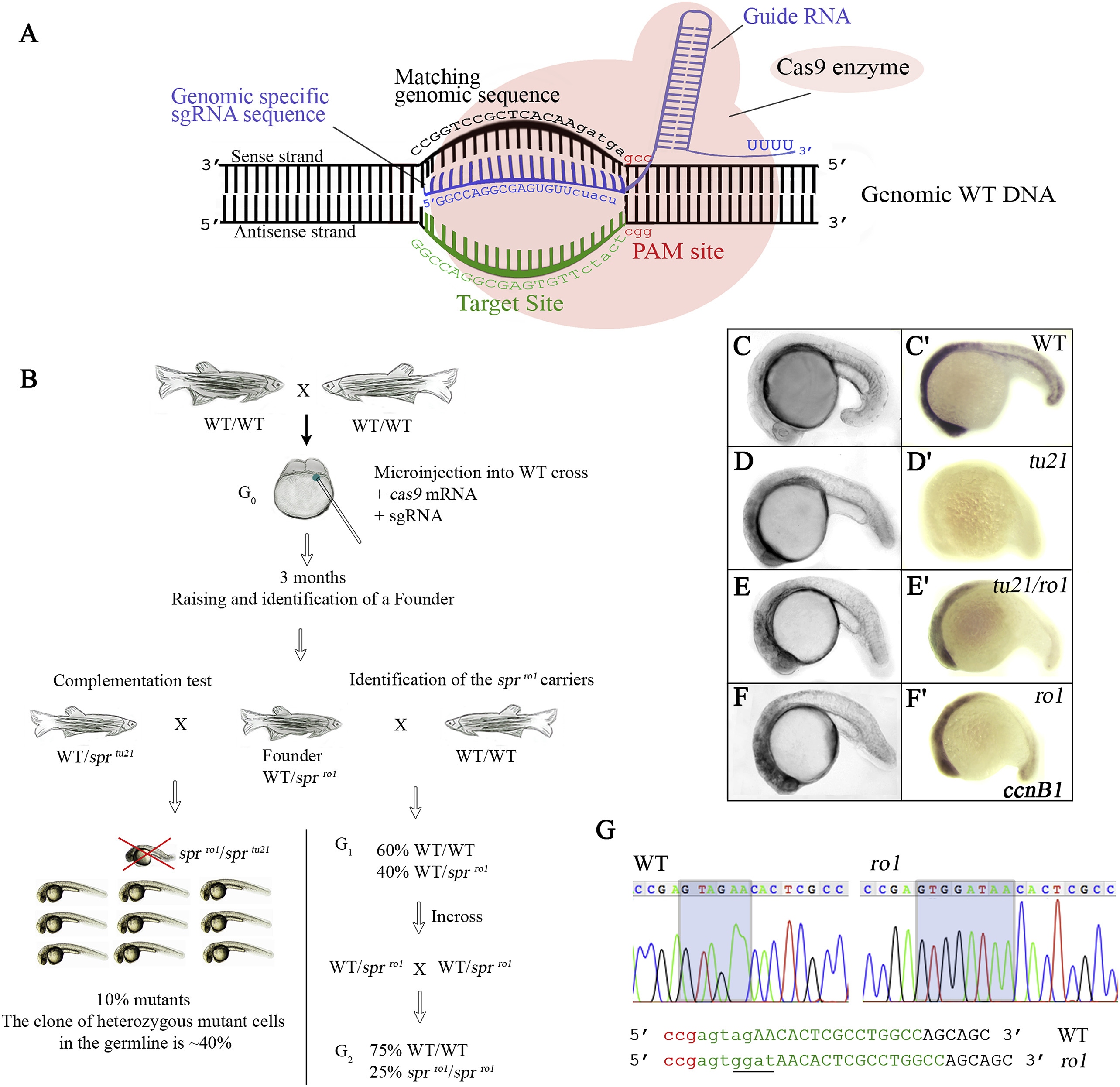Fig. 3
CRISPR/Cas9-mediated mutagenesis confirms sprtu21 is a mutation in the cyclin B1 gene. (A) Schematic representation of the CRISPR/Cas9 system, recognizing the target site within exon 2 of the cyclin B1 gene. Blue, guide RNA (sgRNA); green, target site where ag is the acceptor site of intron 1; red, PAM site. (B) Diagram of CRISPR/Cas9-mediated mutagenesis. Embryos from a wild-type cross (G0) were injected at the 2-cell stage with the cas9 mRNA and sgRNA. After 3 months, founders were complementation tested to sprtu21heterozygotes. In the G1, 10% of the eggs were sprtu21/ro1transheterozygotes suggesting that the germline clone was approximately 40% of the germline. After outcrossing the G1 sprro1founder to wild-type fish, identification of the sprro1 carriers (G2) was done by incrossing. (C–F) In vivo morphology and expression of cyclin B1 mRNA in: (C′) wild-type, (D′) sprtu21, (E′) sprtu21/ro1, and (F′) sprro1mutant embryos at 25 h. All embryos are shown in side view. Note that the sprtu21/ro1 (E′), and sprro1 (F′) mutant embryos have zygotic cyclin B1mRNA transcripts at 20 h, but sprtu21 mutant embryos do not. (G) Chromatograph sequence showing a splice-site mutation occurs in the sprro1. The sprro1 mutant has a 2-base deletion (AG acceptor site) and 4 base insertion (GGAT), underlined. Green, sgRNA target site; red, PAM site.
Reprinted from Developmental Biology, 451(2), Petrachkova, T., Wortinger, L.A., Bard, A.J., Singh, J., Warga, R.M., Kane, D.A., Lack of Cyclin B1 in zebrafish causes lengthening of G2 and M phases, 167-179, Copyright (2019) with permission from Elsevier. Full text @ Dev. Biol.

